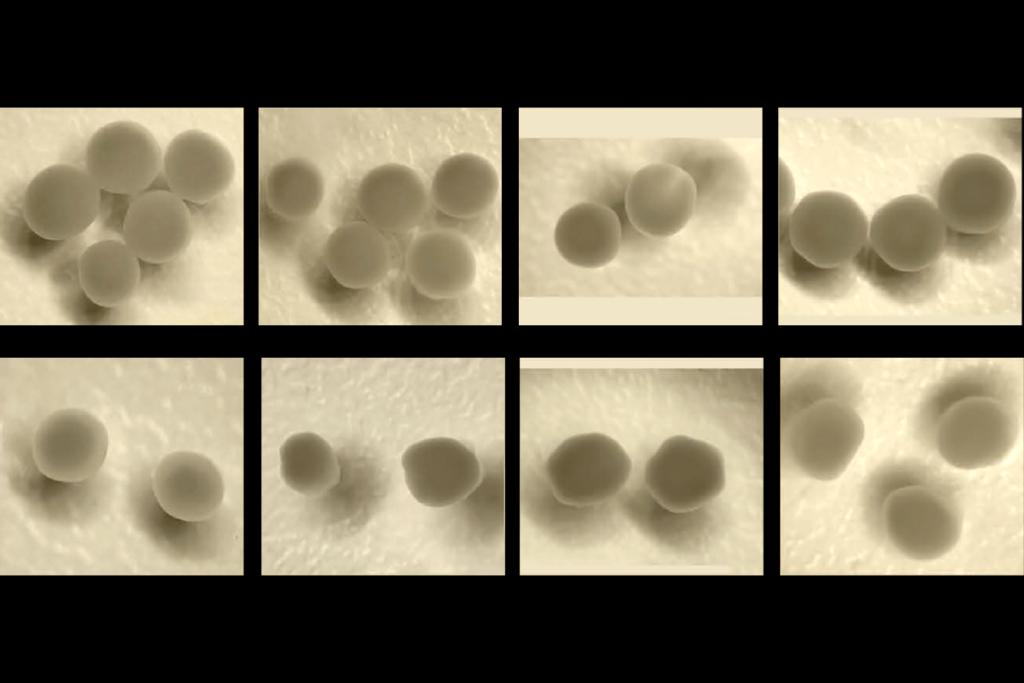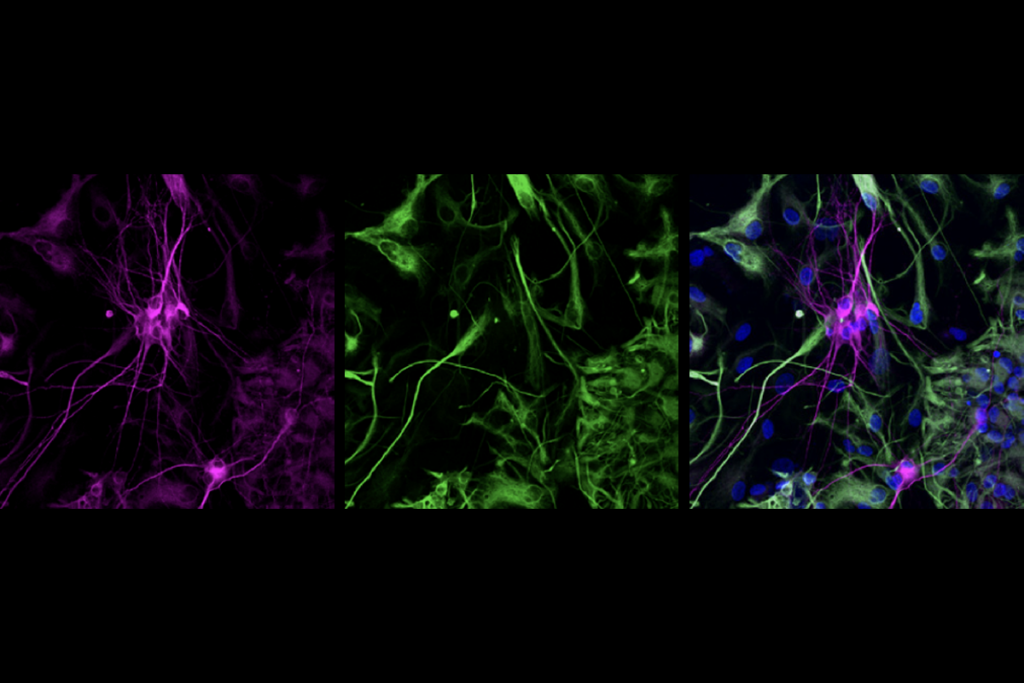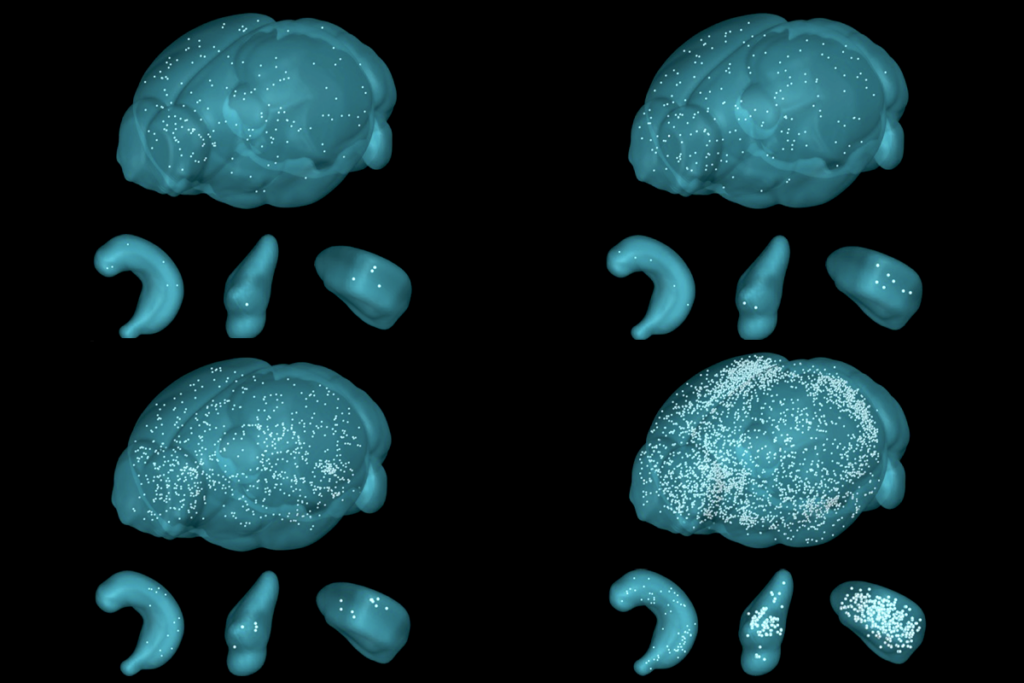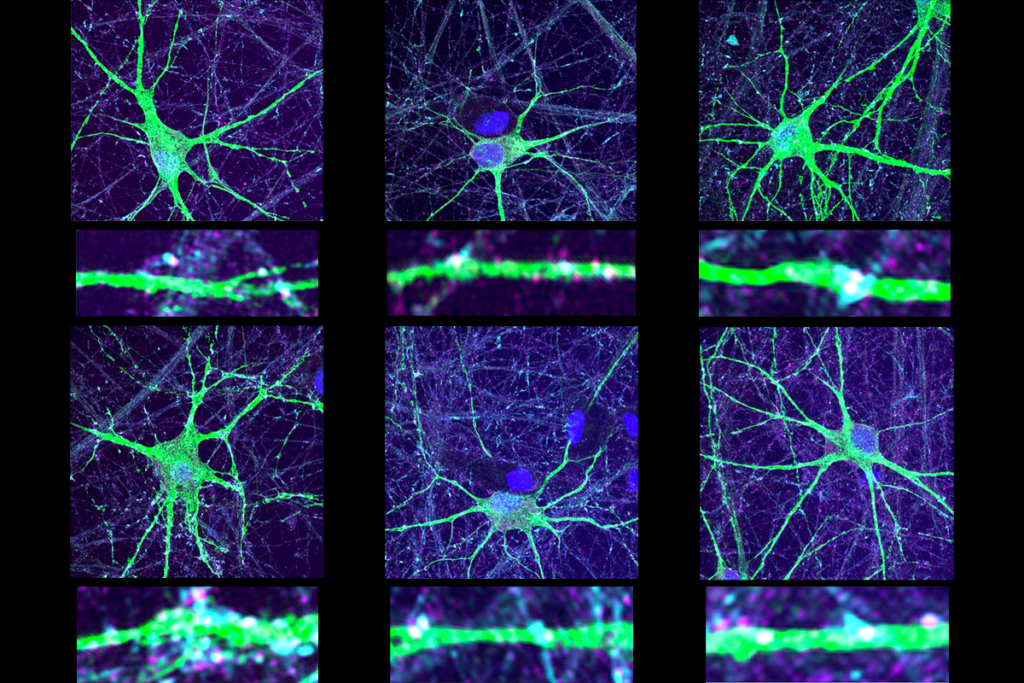Baby sib studies reveal differences in brain response
Studies on younger siblings of children with autism are finding that during tests of sensory or perceptual processing, these baby sibs show abnormally fast brain responses, rather than a delay.
The whimsical décor at the Baby Lab at the University of California, San Diego (UCSD), is designed to appeal to its most important visitors: the 400-plus babies and toddlers who have visited the cozy space since 2002.
Paintings of trees with spindly brown branches and plump green leaves cover the walls. Books, plastic cars and coloring books spill out across the carpeted floor and fill several plastic bins.
The children who come here are as young as 3 months on their first visit, and return every few months to participate in a battery of tests of their social behavior and perceptual processing — the brain’s response to non-social stimuli, such as looking at an ordinary object.
About one in four of these children is particularly interesting to the researchers: They are the younger siblings of children with autism, and are much more likely to develop the disorder than are those without a family history of it. Over the past few years, scientists have gathered heaps of behavioral data from these so-called ‘baby sibs’, but the Baby Lab is among the first to look for distinct signatures of brain activity.
The lab’s studies are ongoing, but two published reports have uncovered surprising differences between baby sibs and age-matched controls. Previous imaging work on face processing in people with autism had found abnormalities, suggesting to many researchers that their brains are slow to process social information. But the Baby Lab team is finding that during tests of sensory or perceptual processing, baby sibs show abnormally fast brain responses, rather than a delay.
Lead investigator Karen Dobkins says these data suggest an alternate interpretation of autism’s origins. Instead of resulting from a disruption of the brain’s social behavior circuits, she says, the disorder could arise from early upsets in perceptual processing, which eventually cause more noticeable social problems.
“We know that the hallmarks of autism are social in nature, but social systems develop later than sensory systems,” says Dobkins, professor of psychology at UCSD. “How on earth are you supposed to respond appropriately, behave appropriately, if you don’t perceive your world properly?”
This hypothesis agrees with previous reports from other labs conducting baby sib research, which converge on the idea that there is no fundamental social problem in autism, but rather gradual deficits in several different perceptual and sensory systems, according to a review of these studies published in June1.
Chicken or egg?
The Baby Lab tests children for different abilities as they grow up. At 3 and 6 months of age, for instance, the infants sit on their mothers’ laps and watch gray lines flash on a computer screen — allowing researchers to assess how well they detect visual contrast. At 10 and 18 months, the toddlers wear electrodes on their scalp, allowing researchers to record brain activity during perceptual tasks, such as looking at pictures of faces or objects, and social ones, such as playing with a new toy along with their mothers.
The lab’s newest study, to be published in the 15 November issue of Biological Psychiatry, found that 10-month-old baby sibs produce brain-wave responses to pictures of toys significantly faster than do controls2.
The findings support a 2007 report from the researchers in which they found that, compared with healthy controls, 6-month-old baby sibs show twice as much sensitivity to black-and-white visual contrast3. The researchers say this heightened ability stems from unusual robustness in an early visual brain pathway — one that feeds into brain areas responsible for processing emotions and facial expressions.
But others are skeptical, saying the heightened processing does not necessarily indicate that perceptual glitches are the root cause of the disorder.
“If that were true, then you wouldn’t have something so specific happening in the social domain. They would have visual problems, and more global forms of intellectual disability,” notes Ami Klin, director of the Autism Program at the Yale Child Study Center.
A fundamental social deficit also makes more sense from an evolutionary perspective, Klin adds. “The things in the world that are important to an infant’s survival are people, not objects. Why should they pay more attention to objects?”
In his own studies, Klin has found that, unlike healthy controls, toddlers with autism show no preference for human motion, and tend to look at other people’s mouths instead of their eyes.
The question of which deficits come first “is very much a ‘chicken or egg’ problem,” says Mayada Elsabbagh, scientific coordinator of the British Autism Study of Infant Siblings. “What’s going on is actually affecting multiple systems at the same time, in a way that we don’t see very clearly within the first year.”
Faces vs. objects:
In the decade since researchers began conducting comprehensive baby sib studies, none have detected the trademark social behaviors of autism in infants younger than 1 year. By measuring brain waves, the new studies are the first to detect oddities in early development.
“When we use more fine-grained laboratory measures, we’re finding that there are more subtle differences that emerge,” Elsabbagh says.
In January, her group was the first to test baby sibs using electroencephalography (EEG), a non-invasive technique that measures brain waves through the scalp. Studying 10-month-olds, the researchers found that, compared with control infants, baby sibs show a delayed brain wave response — by about 30 milliseconds — to photos of women looking directly at them4. A few years ago, members of her group found a delay in young children with autism when looking at similar pictures5.
“That data was quite surprising to us,” Elsabbagh says. “Despite the fact that we were looking at relatively small groups of infants at risk, we were finding these robust group differences.”
When looking at faces, 10-month-old baby sibs and controls respond at about the same rate. When the baby sibs look at pictures of toys, however, they respond more quickly than controls do.
“It could be that part of the genetics of autism is to have enhanced object-processing that makes the baby pay attention to objects, at the expense of developing face-processing mechanisms properly,” Dobkins says. “That’s how you could possibly end up with the adult version of having problems with social interactions and with faces.”
Several other studies bolster the idea that in people with autism, a preference for looking at objects may come at the expense of looking at faces and, therefore, of making social connections.
For instance, a 2006 EEG study led by Sara Webb found that unlike healthy children, who process faces faster than objects, toddlers with autism show the reverse pattern6.
“Where we need to move now in the research is to look at how things like face processing or object processing interact with other skills and other domains,” says Webb, a research assistant professor at the University of Washington. “That may help us understand a bit better about long-term outcome for specific children.”
Genetic load:
When the baby sib research first began, researchers were most interested in finding ‘endophenotypes‘ — quantifiable traits that are unusually common in families with autism — that could predict which babies develop the disorder.
Comparing data from baby sibs could reveal, for example, that those who go on to develop autism have a more severe expression of the endophenotype — such as a longer face-processing delay — or that they have the same level of expression, but don’t have compensatory mechanisms to mitigate its effects.
Of the 23 babies who completed Dobkins’ new study, 3 were later diagnosed with autism, and were not included in the report. She says her team will need to collect a lot more data before finding any brain-processing differences between baby sibs who go on to develop autism and those who do not. “That’s the million-dollar data,” she says.
Older behavioral studies, however, have not found anything different in baby sibs who do develop autism. For instance, in Dobkins’ group’s 2007 paper on visual contrast sensitivity, the data from 2 infants who went on to develop autism is “almost the same” as that of the 13 other baby sibs, notes Joseph McCleery, a lecturer in developmental neuroscience at the University of Birmingham in England. McCleery led both studies while he was a graduate student in Dobkins’ lab.
If the new data are validated in a larger group of children, they could explain why autism persists in the general population despite the reduced reproductive rates of those with the disorder, McCleery says.
“What this suggests is that maybe there’s something good about having these kinds of genes,” McCleery says, such as an increased ability to pay attention to changes in your environment. “But it may be that if you get too many of these oddball genes, they may create problems for you that tumble into what turns out to be autism or a severe social impairment.”
References:
-
Rogers S.J. Autism Res. 2, 125-137 (2009) PubMed
-
McCleery J.P. et al. Biol. Psychiatry 66, 950-957 (2009) PubMed
-
McCleery J.P. et al. Biol. Psychiatry 62, 1007-1014 (2007) PubMed
-
Elsabbagh M. et al. Biol. Psychiatry 65, 31-38 (2009) PubMed
-
Grice S.J. et al. Cortex 41, 342-353 (2005) PubMed
-
Webb S.J. et al. J. Autism Dev. Disord. 36, 881-890 (2006) PubMed
Recommended reading

Parsing phenotypes in people with shared autism-linked variants; and more

Boosting SCN2A expression reduces seizures in mice
Explore more from The Transmitter

Engrams in amygdala lean on astrocytes to solidify memories
Ant olfactory neurons reveal new ‘transcriptional shield’ mechanism of gene regulation

